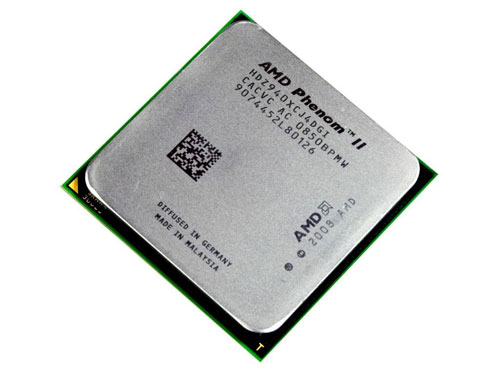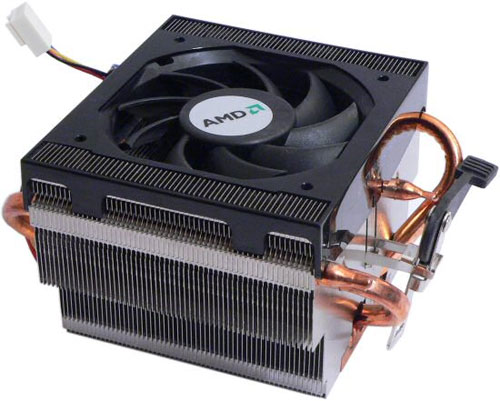This article has been written after additional tests of the AMD Phenom II X4 940 Black Edition, the recent flagship from this company. We had already reviewed this processor according to our standard test procedure here and had benchmarked it in the overclocked mode in modern games here.
Additional tests were necessary to compare different CPU coolers, to try the new version of AMD Overdrive 3.0.2 and AMD Fusion For Gaming, as well as to run a number of popular benchmarks from the largest database of overclocked components -- HwBot.org.
Besides, out of curiosity and in order to obtain higher results, we also overclocked the AMD RADEON 4890 graphics card (within safe limits). We'll describe the experience below.
Testbeds:
- Motherboard: Gigabyte MA-790GP-DS4H
- AMD processor: Phenom II X4 940 Black Edition
- Memory: Corsair DDR2 667 MHz (5-5-5-15-2T) 2x1024 MB
- HDD: Seagate 160 GB SATA2
- Power supply unit: Corsair HX520 520 W
- Operating system: Windows Vista Ultimate SP1 32-bit
We also wanted to see how our power supply unit would hold in these difficult conditions. Marketing departments have recently managed to impress in users' minds that a powerful computer, especially when overclocked, cannot use a power supply unit below 750 W or even below 1000 W. Let's try to find out whether it's true.
As you may remember, AMD Black Edition processors are implied to allow modifying the multiplier. So any motherboard would do for CPU overclocking in this case. It doesn't have to raise chipset voltage and endure very high clock rates.
A nice feature of a motherboard in our testbed was an option to specify a CPU multiplier at 0.5 steps, not just at integer steps. It facilitates the overclocking procedure, leaving to an overclocker only final tweaking within 100 MHz.
Unfortunately, memory for the testbed turned out to be the weakest link. So our tests won't break any overclocking records. However, we can still evaluate performance gains versus the nominal clock rates -- and that's what we are primarily interested in.
Our graphics card is a test sample from AMD, so it has a reference design. We did not improve or replace the native cooling system for our overclocking tests.
All tests were run in an open testbed with the environment temperature of 24°C. We used LinX 0.5.9 for stability tests -- it's a simple and convenient GUI for the Linpack benchmark from Intel (popular among overclockers). We registered a reached frequency as stable after completing 25 test runs using 1024 MB of memory.
The following tests were used for all CPU clock rates:
At the maximum stable frequency we also started the following tests:
- 3DMark 2006
- Hexus Pifast
- SuperPi
- Wprime
We used CPU-Z 1.51 to read information about CPU clock rates and HW Monitor 1.14 to monitor voltages and temperatures. All power saving technologies were disabled during our tests, CPU fan speed was maximized.
Overclocking, boxed cooler
We got our processor with a full bundle, so it would have been a real waste not to test this small cooler with a copper base, two heat pipes, aluminum fin-stack, and a 70-mm fan.
First of all we ran all our tests at the nominal frequency of 3000 MHz and 1.35 V. Test results are published in the table:
| |
AMD Phenom II X4 940 Black Edition 3000 MHz |
| WinRAR 3.71, s |
64 |
| 7-Zip 4.57, s |
147 |
| x264 v0.59.819M, fps (1pass/2pass) |
66.00 / 17.46 |
| 3DMark Vantage, 3DMark Score (CPU Score) |
P9842 (10011) |
| PCMark Vantage, PCMarks |
5561 |
Our Phenom II X4 940 Black Edition managed 3400 MHz without increased voltage. However, Linpack crashed at the end of the test. We managed to solve the problem only by raising the voltage to 1.425 V.
The next step required even more concessions -- to conquer 3600 MHz, we had to raise voltage by another 0.075 V. The boxed cooler coped with such a task only because the testbed was open. All the tests were stable. However, according to the processor sensors, its temperature got close to 70°C.
| |
AMD Phenom II X4 940 Black Edition 3600 MHz |
| WinRAR 3.71, s |
55 |
| 7-Zip 4.57, s |
142 |
| x264 v0.59.819M, fps (1pass/2pass) |
75.99 / 20.69 |
| 3DMark Vantage, 3DMark Score (CPU Score) |
P10276 (11938) |
| PCMark Vantage, PCMarks |
5647 |
This mode is only partially fit for everyday usage. There was no point to continue our tests with the boxed cooler, and it was even getting dangerous. Nevertheless, it demonstrated decent results. Overclockers have worked out a stereotype for all the years boxed coolers existed that such cooling systems are not fit for overclocking at all (which was true until recently).
Write a comment below. No registration needed!


